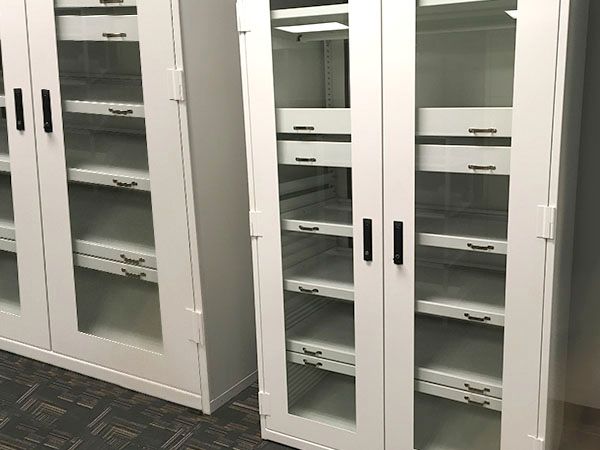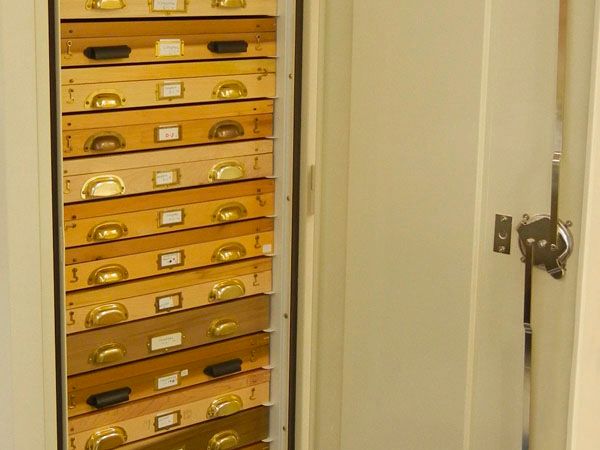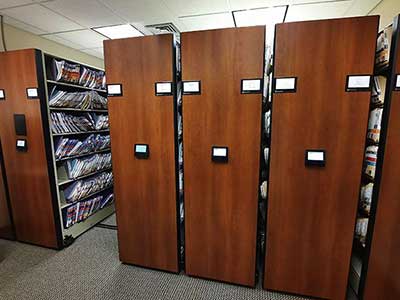Museums, Science & Technology Museum, Art Collection
How to combat Agents of Deterioration
How the right storage solutions can help mitigate damage and preserve history.
The primary focus of any heritage institution is to preserve collections. Having the right systems and processes in place can provide immeasurable value for curators and patrons and ensure historic artifacts are maintained for generations to come. Below, we’ll focus on the leading agents of deterioration – which have been identified by industry professionals as the most devastating of potential threats – and how Spacesaver and our nationwide network of local distributors support collections professionals in planning, installing, and maintaining systems that protect collections from these harmful agents.
Direct Physical Forces
Sudden shock, vibration, or long-term pressure that can break and deform objects. Some common causes include system operation and nearby construction projects.
How to Mitigate Direct Physical Forces:
- Anti-tip rail systems are designed to provide stability and reliability for compact shelving in seismically active areas
- Anti-tip bars prevent objects on shelves from falls and spills
- Closed rivet nuts on cabinets allow cabinets to be attached to one another for additional stability
Ensuring Nothing's Shaking
Spacesaver engineers worked with California Academy of Science staff to design compact mobile storage solutions to accommodate specimens preserved in liquid. Special care must be taken when storing such specimens, particularly in seismically active areas like San Francisco. Bin fronts, or “earthquake bars,” finish the front edges of the open upper shelves to prevent spillage or breakage in the event of an earthquake, and partial doors enclose lower shelves.

Risk Management with Mobile Storage
Want to increase storage capacity and collections safety at the same time? Our versatile High-Density Mobile Shelving Systems have you covered.
Risk Management with Mobile Storage
Want to increase storage capacity and collections safety at the same time? Our versatile High-Density Mobile Shelving Systems have you covered.

Contaminants
Collections care best practices protect from contaminants that are airborne, transferred by contact, or intrinsic to the collection. Common examples include dirt, soot, volatile components from plastics and wood, and residual pesticides.
How to Mitigate Contaminants:
- Spacesaver cabinets and shelving feature non-off-gassing paint to avoid chemical contamination
- Keeping collections inside sealed cabinets helps keep objects away from potentially harmful airborne pollutants
Squashing Pollution
At the Chicago Field Museum, Spacesaver Museum Cabinets are used to keep entomology collections protected from contamination. The cabinets feature fumigant-resistant elastomeric gaskets for a secure door seal, a three-point latch to ensure the cabinets are airtight, and non-off-gassing paint to prevent chemical deterioration.
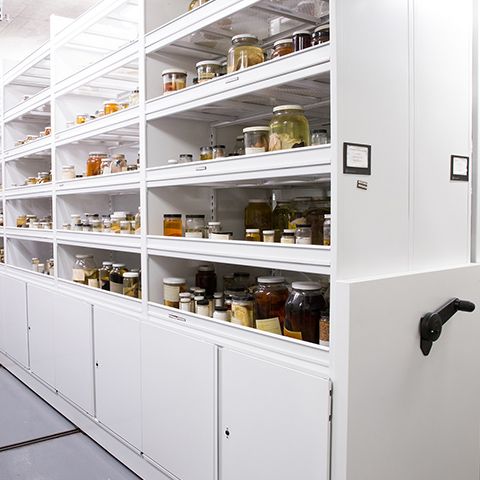
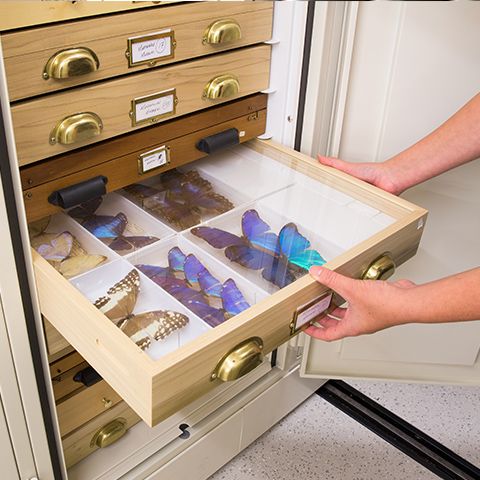
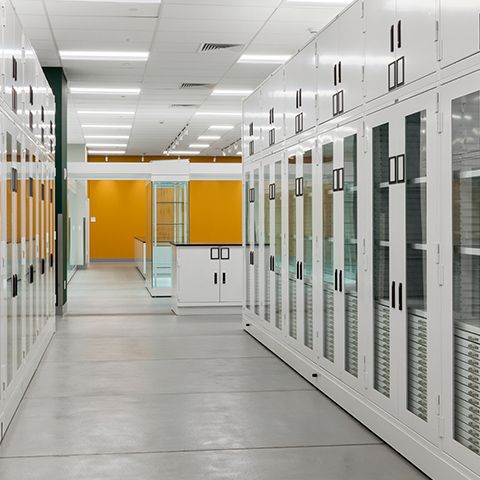
Thieves, Vandals, & Displacers
Objects can be stolen or maliciously damaged by individuals, or simply misplaced by museum personnel.
How to Mitigate Misplaced Items and Theft:
- Control access with PIN codes, physical locks, or key cards
- Keep an audit trail to track who has accessed collections
Increasing Security with Intelligent Lock Options
Mechanical and electronic locks on cabinets and compactors serve as a final line of defense against the theft of valuable objects at many museums. Leveling up the security of your systems, smart locks with the ability to provide an audit trail can be installed to track who last accessed the cabinet in case of a missing object.

Risk Mitigation Guide
See how our proven museum storage solutions can help ensure your collections stay on-site, and in sight of your patrons and staff.
Risk Mitigation Guide
See how our proven museum storage solutions can help ensure your collections stay on-site, and in sight of your patrons and staff.

Incorrect Temperature
High temperatures speed up the deterioration of unstable materials, while low temperatures can cause hazing and cracking. The ideal temperature can vary widely depending on the collection and its contents.
How to Mitigate Incorrect Temperatures:
- Storing smaller collections in upright refrigerators or freezers
- Storing medium-sized collections in shelving or museum cabinets housed in walk-in coolers
- Large institutions are recommended to use compactors housed in cold rooms and walk-in freezers to store their collections
- For items particularly sensitive to heat, cold temperatures and/or humidity, sealed cabinets and climate controls provide added protection.
Pictures Perfect
The Denver Museum of Nature & Science recently built a cooler and freezer to house its image collection. Film, photographic prints, and other materials had previously been stored in various locations around the museum, and staff wanted to consolidate the collection in climate-controlled spaces. When a major gift enabled the construction of a new wing, their local Spacesaver representative worked with museum staff and the architect to create a compact cold storage solution that protects the collection, saves space, improves organization and efficiency, and complies with applicable codes.
Water
Floods, leaky roofs, or slow drips from pipes can irreparably damage collections.
How to Mitigate Water Damage:
- Steel compactors can raise shelving 4-6″ to help avoid shallow floods
- Metal shelving stands up to water better than wood or particle board
- Adding waterproof caps to cabinets, rather than seams at the top
Leveling Up
“I would say, in terms of disasters, the age-old wisdom that 90% of floods are four inches, so make sure your bottom shelf is off the floor. Make sure that you don’t have a reservoir of infestation under your cabinet, it’s off the ground for flood, for water, and for pests – that you can clean and inspect it.” – Deputy Director of Operations at the University
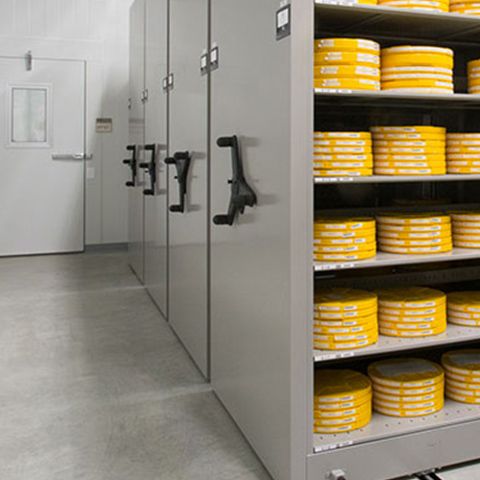
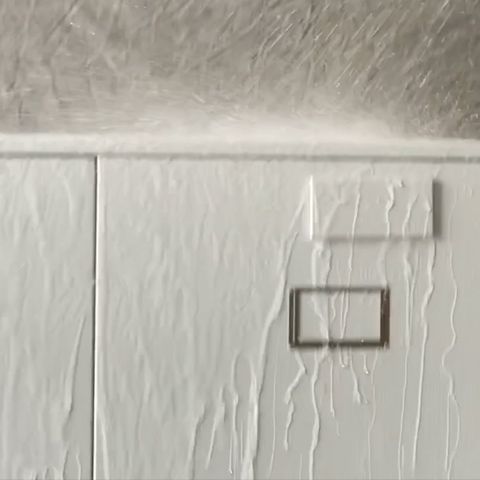
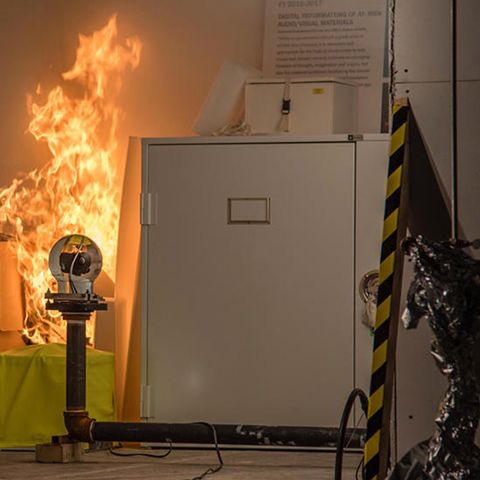
Fire
Fire in itself can cause irreputable damage to collections. However, and just as damaging, is the ability of the resulting smoke and soot to destroy and stain objects. By utilizing sealed museum cabinets, you can provide a higher degree of protection for materials stored within, even if the room around them is covered in the fire’s remnants.
How to Mitigate Fire Damage:
- Use a powder coat finish capable of withstanding high temperatures
- Equip cabinets with gasket seal to reduce the likelihood of smoke damage
- Select fire-resistant corrugated steel panels
Beating the Heat
The 920 Series: Preservation Cabinet was sent to a federal agency for a burn workshop in the fall of 2018. Although the side of the cabinet reached approximately 900 degrees Celsius (1,650 degrees Fahrenheit), items in plastic bags inside the cabinet were unaffected by smoke and soot. Additionally, no water from the sprinkler system penetrated the cabinet.

Burn Workshop
Going beyond flame protection, see how our museum storage cabinets mitigated damage from all fire factors.
Burn Workshop
Going beyond flame protection, see how our museum storage cabinets mitigated damage from all fire factors.

Radiation/Light
Radiation from light waves can fade and embrittle your collection’s sensitive materials. Employing cabinet doors with glass provides better visibility and UV protection for your materials.
How to Mitigate Radiation/Light Damage:
- Equip doors and drawers with UV protected glass
- Block out windows to reduce/eliminate light contamination
- Utilize sliding art racks to protect hanging art collections
Read our blog on how to further mitigate light damage to your museum collections here.
Pests
Pests will do anything to find a way into storage systems in order to nest and eat organic collections. Additionally, the development of mold can consume and stain organic material in improperly tempered conditions.
How to Mitigate Damage from Pests:
- Use white paint for easier detection of infestations
- Seal interior and exterior doors, ductwork, and baseboards with door sweeps and caulk
- Employ an easy-to-clean interior configuration
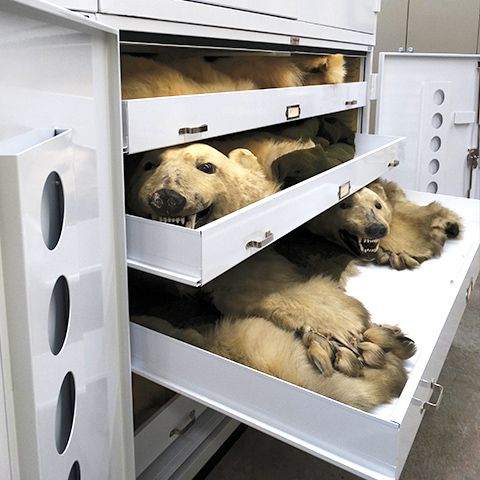

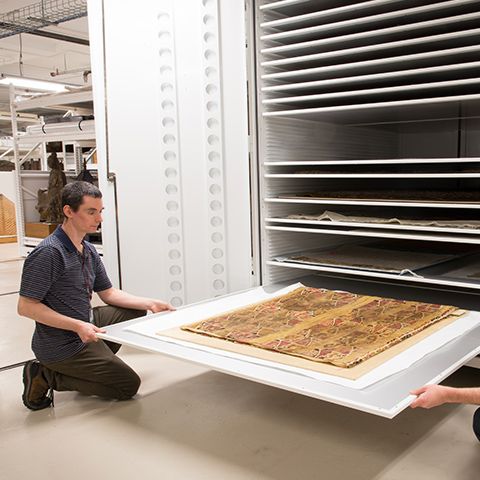
Dissociation & Neglect
When storage best practices are not maintained, objects can be separated from their records or other items in the collection.
How to Mitigate Damage from Dissociation & Neglect:
- Organize as much of a collection in one physical space as possible
- Utilize cabinets, drawers, widespan shelving, and hanging art racks to accommodate varying sizes of objects in close proximity while maintaining easy access
Read our blog on how to further mitigate dissociation of items in your museum collections here.
Relative Humidity
Low relative humidity can lead to drying and cracking, while high relative humidity can encourage mold growth. It’s important to understand the requirements of your collections and adjust the humidity accordingly.
How to Mitigate Damage from Humidity:
- Use sealed cabinets to help maintain a more constant climate
- Consult HVAC specialists, especially if your collections are housed in a historic building
Next Up in Museums
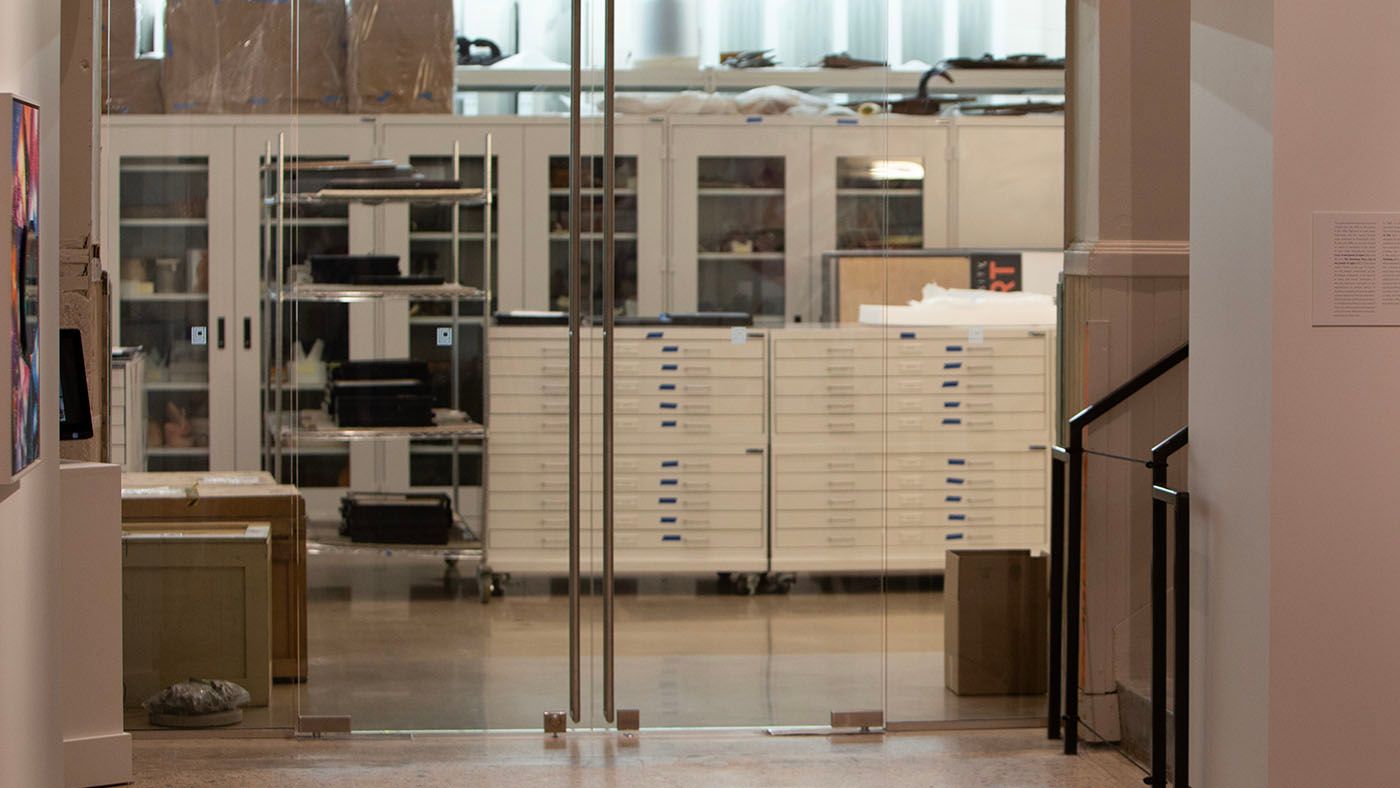
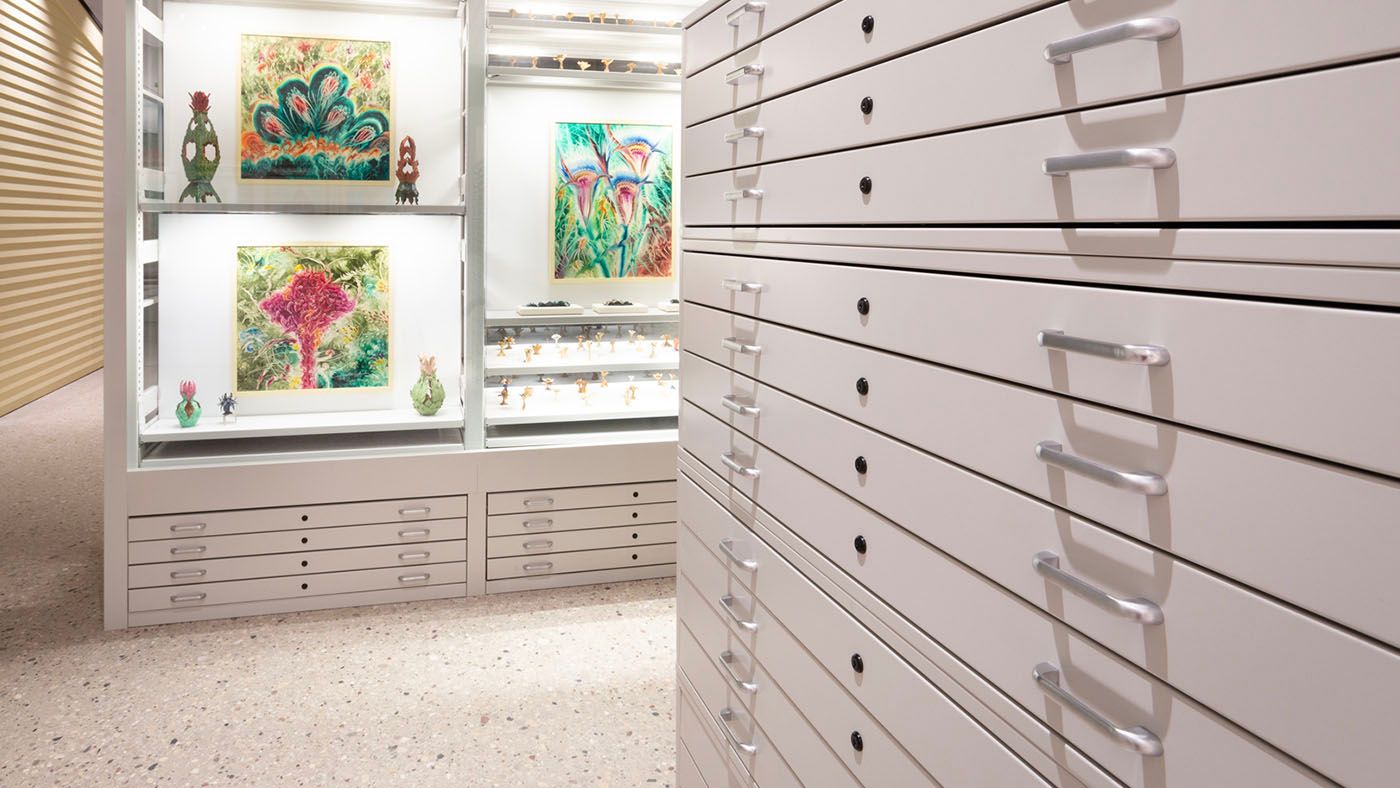
Secure and Preserve Your Art Collections with Premium Museum Storage Cabinets
Read On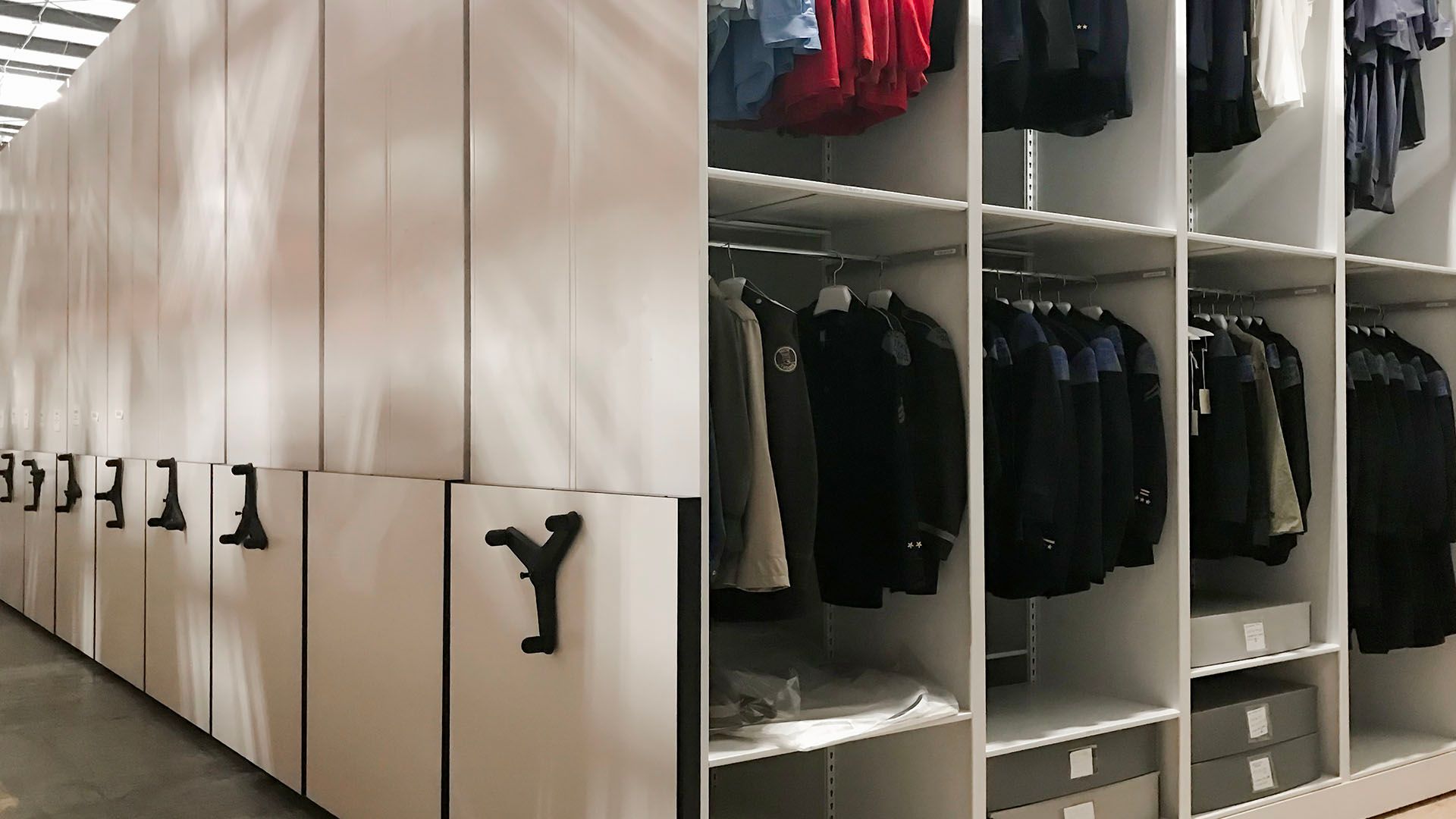
Storage solutions for preserving historical artifacts in limited spaces.
Read On